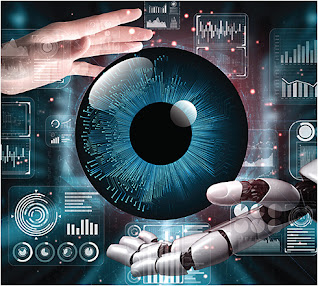Artificial
intelligence (AI) for actual clinical practice in glaucoma is still fraught
with numerous limitations. Tae Keun Yoo, from the B&VIIT Eye Center, Seoul, Korea,
discusses the role of AI in glaucoma in this correspondence published in the Journal
of Medical Artificial Intelligence (JMAI).
https://jmai.amegroups.org/article/view/7990/html
First,
the criteria for glaucoma diagnosis should be standardized. As commented by
Goldmann et al., there is currently a lack of a standardized “ground truth”
definition of glaucoma. The spectrum of glaucoma is wide, and there is a
shortage of glaucoma experts worldwide. Therefore, the clinical practice patterns
in the management of glaucoma may differ from practitioner to practitioner, and
the treatment regimen differ. This problem poses many obstacles to the
development and clinical validation of diagnostic devices for glaucoma.
For
more accurate performance, it is important to compare and standardize glaucoma
diagnostic data at as many centers as possible and train the AI model based on
this verified dataset.
Second,
it is important to analyze the time-series and multimodal data of patients with
glaucoma. The evaluation of glaucoma commonly involves measuring intraocular
pressure, fundus photography, optical coherence tomography, and visual field analysis.
The progression of functional or structural damage during follow-up is an
important factor in the diagnosis and treatment of glaucoma. Each measurement
reflects only a few clinical aspects of glaucoma.
In
addition, errors often occur in one measurement domain; therefore, other
domains must be complemented to evaluate glaucoma. Recently, time-series
analyses and multimodal deep-learning models have been studied for glaucoma
diagnosis. In the future, large-scale data analyses based on these approaches
will succeed in a more accurate glaucoma evaluation.
Third,
detailed data on neurodegenerative and systemic metabolic conditions should be
collected along with glaucoma data to predict progression. In addition,
neurodegenerative diseases have been shown to be predictable by fundus
photography, and most are closely related to the optic nerve head and the
retinal nerve fiber layer in glaucoma. AI technology based on multimodal deep
learning is increasingly used to analyze high-definition images in every area
to reveal the relationship between systemic diseases and retinal images in
greater detail.
Finally,
generative AI techniques should be applied to overcome the lack of pathological
data. Data shortages frequently occur because of security or privacy issues.
Learning about the imbalanced medical data may result in a biased diagnostic
model. Data augmentation techniques are required for accurate diagnosis in the
clinical field, and recently developed generative deep learning models such as
generative adversarial networks (GAN) provide solutions to this problem.
Although still in their infancy, diffusion models, which are newly introduced
generation technologies after GAN, can generate fundus photographs. As data
quality is increasingly improved based on a large amount of data, realistic
generative fundus images will be synthesized based on a large amount of data in
the future.
In
conclusion, various strategies are required to develop AI for glaucoma
diagnosis and treatment. As Goldmann et al. commented, this cannot be solved at
once and should be based on the interdisciplinary integration and mutual
support of all complementary approaches.








No comments:
Post a Comment